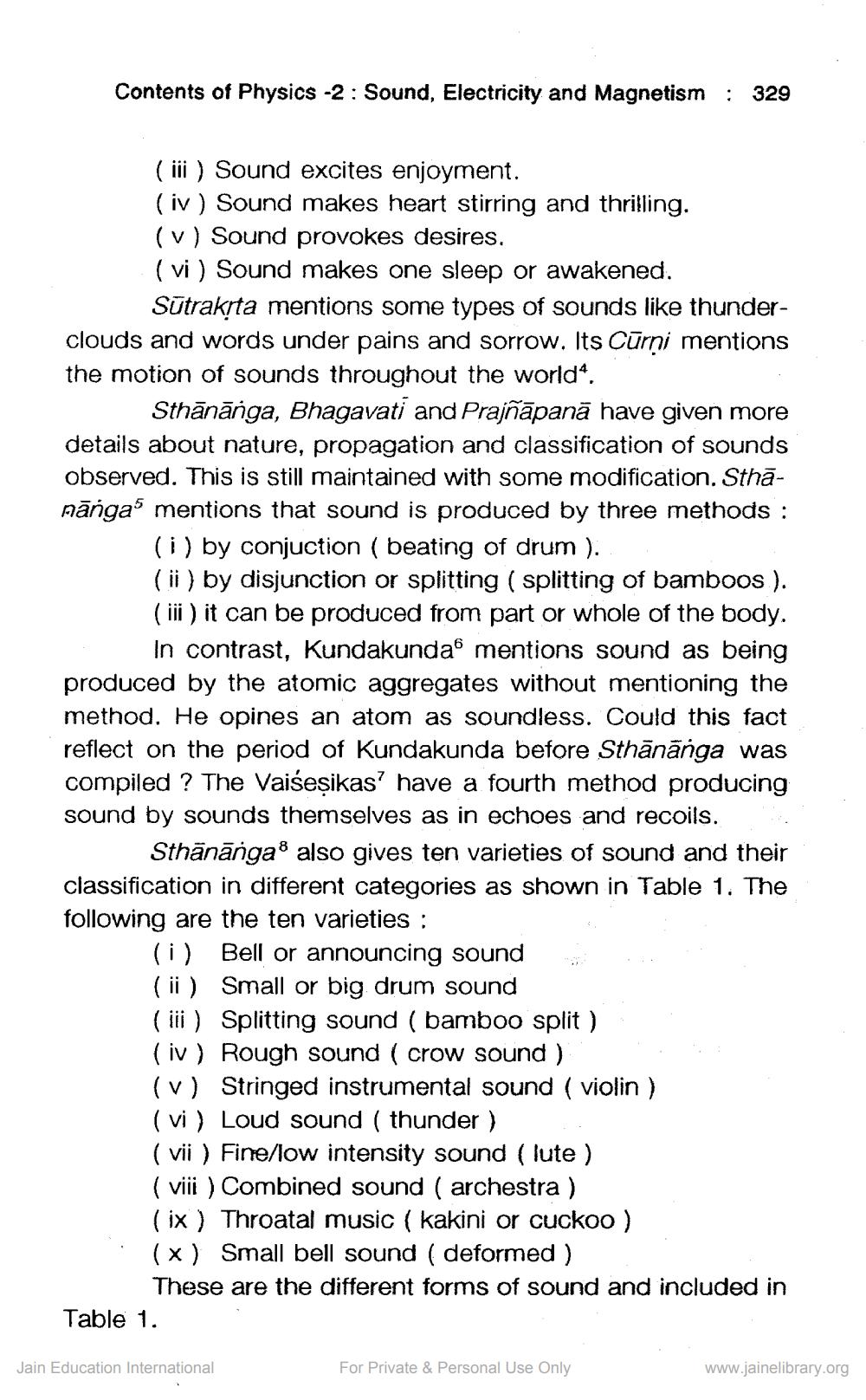________________
Contents of Physics -2: Sound, Electricity and Magnetism
; 329
(iii) Sound excites enjoyment. (iv) Sound makes heart stirring and thrilling. (v) Sound provokes desires. (vi) Sound makes one sleep or awakened.
Sūtrakrta mentions some types of sounds like thunderclouds and words under pains and sorrow. Its Cūrni mentions the motion of sounds throughout the world,
Sthānānga, Bhagavati and Prajñāpanā have given more details about nature, propagation and classification of sounds observed. This is still maintained with some modification. Sthāmāngas mentions that sound is produced by three methods :
(i) by conjuction ( beating of drum ). (ii) by disjunction or splitting ( splitting of bamboos ). (iii) it can be produced from part or whole of the body.
In contrast, Kundakunda mentions sound as being produced by the atomic aggregates without mentioning the method. He opines an atom as soundless. Could this fact reflect on the period of Kundakunda before Sthānānga was compiled ? The Vaiśeșikas? have a fourth method producing sound by sounds themselves as in echoes and recoils.
Sthānānga: also gives ten varieties of sound and their classification in different categories as shown in Table 1. The following are the ten varieties :
(i) Bell or announcing sound on the (ii) Small or big drum sound (iii) Splitting sound ( bamboo split ) (iv) Rough sound ( crow sound ) (v) Stringed instrumental sound ( violin ) (vi) Loud sound ( thunder ) (vii) Fine/low intensity sound ( lute) (viii) Combined sound ( archestra) (ix) Throatal music ( kakini or cuckoo ) (x) Small bell sound ( deformed )
These are the different forms of sound and included in Table 1.
ta
Jain Education International
For Private & Personal Use Only
www.jainelibrary.org




